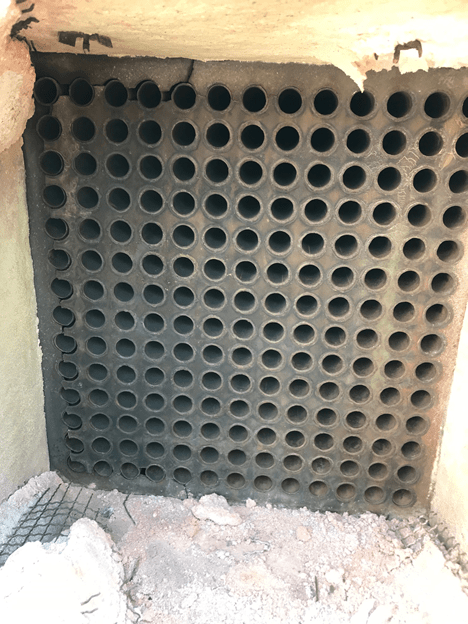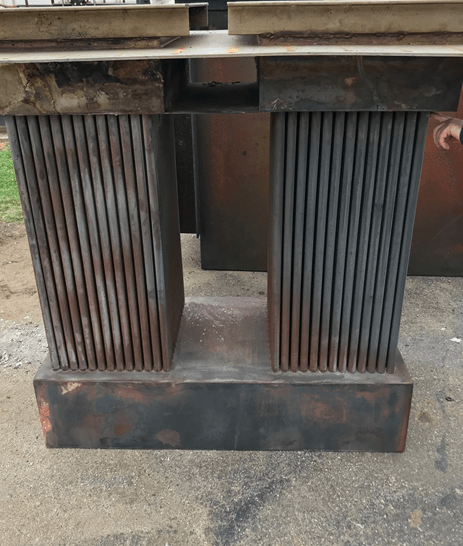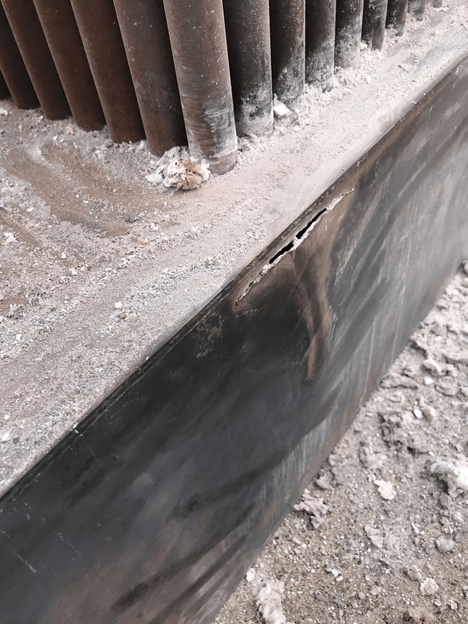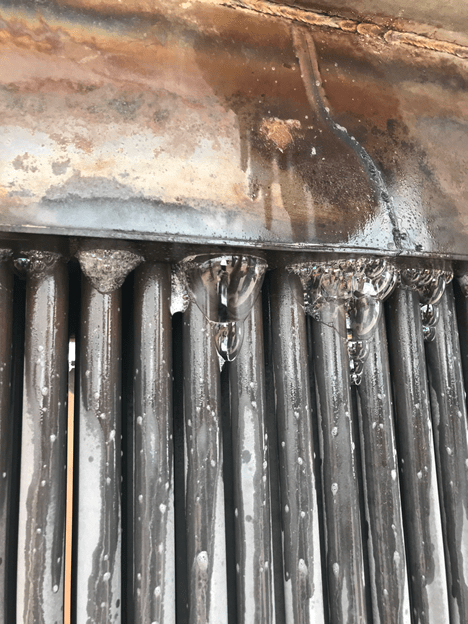We have a vapor control system in our process that pulls monomer vapors (mainly acrylics, but some vinyls) to one of two thermal oxidizers. We recently had a stack test performed as part our air-permit, and the results were perplexing. In all prior tests (going back every 4 years to the early 2000's) the destruction efficiency of the oxidizers was >98% for both oxidizers, as required by permit. In the most recent test, efficiency ranged from 95-97%, well below permit requirements.
We have not changed anything regarding the system design since the last test in 2016. The incoming air stream with VoC content is the same flow rate/pressure, and the TO is operated at the same temperature as all previous tests. No change in piping configuration has occurred. While we did not conduct speciation testing this time, the source batches for the VoCs were very similar to previous tests. Incoming ppmv of vapors was the same as previous tests. The test methodology was the EPA-required method for carbon, so that should not be different.
There was, however, one change. The testing on the outlet was conducted in the stack, and this time the test ports were ~15' lower than all previous testing. The oxidizer has an economizer, and the gas stream that leaves the economizer and goes to the stack is still >800 F. I believe we may still be getting destruction at that temperature range. If so, dropping the testing height reduced our available residence time before testing, which could lead to the decreased efficiency.
There is one supporting factor for this. During the test of TO1, we had TO2 cooling down with some dilution air. The outlet of these two thermal oxidizers tie in together into a single stack at the bottom, with the test port ~15' above the top inlet port. During the test (while TO2 had dilution air going), stack temperature was read at ~700F at the testing port, and efficiency was ~95%. We cut the dilution air blower off to TO2. Stack temperature increased to 800F, and efficiency immediately increased to 97%.
Time, temperature, turbulence, and excess O2. Those are the variables that I've read that effect destruction efficiency. However, with a re-test fast approaching, I am searching for any other explanations of why our TOs are suddenly not performing as they have in the past. My initial reason is above, but I wanted to check with the members here to see if you have any insights you could offer.
Any help is appreciated.
We have not changed anything regarding the system design since the last test in 2016. The incoming air stream with VoC content is the same flow rate/pressure, and the TO is operated at the same temperature as all previous tests. No change in piping configuration has occurred. While we did not conduct speciation testing this time, the source batches for the VoCs were very similar to previous tests. Incoming ppmv of vapors was the same as previous tests. The test methodology was the EPA-required method for carbon, so that should not be different.
There was, however, one change. The testing on the outlet was conducted in the stack, and this time the test ports were ~15' lower than all previous testing. The oxidizer has an economizer, and the gas stream that leaves the economizer and goes to the stack is still >800 F. I believe we may still be getting destruction at that temperature range. If so, dropping the testing height reduced our available residence time before testing, which could lead to the decreased efficiency.
There is one supporting factor for this. During the test of TO1, we had TO2 cooling down with some dilution air. The outlet of these two thermal oxidizers tie in together into a single stack at the bottom, with the test port ~15' above the top inlet port. During the test (while TO2 had dilution air going), stack temperature was read at ~700F at the testing port, and efficiency was ~95%. We cut the dilution air blower off to TO2. Stack temperature increased to 800F, and efficiency immediately increased to 97%.
Time, temperature, turbulence, and excess O2. Those are the variables that I've read that effect destruction efficiency. However, with a re-test fast approaching, I am searching for any other explanations of why our TOs are suddenly not performing as they have in the past. My initial reason is above, but I wanted to check with the members here to see if you have any insights you could offer.
Any help is appreciated.




